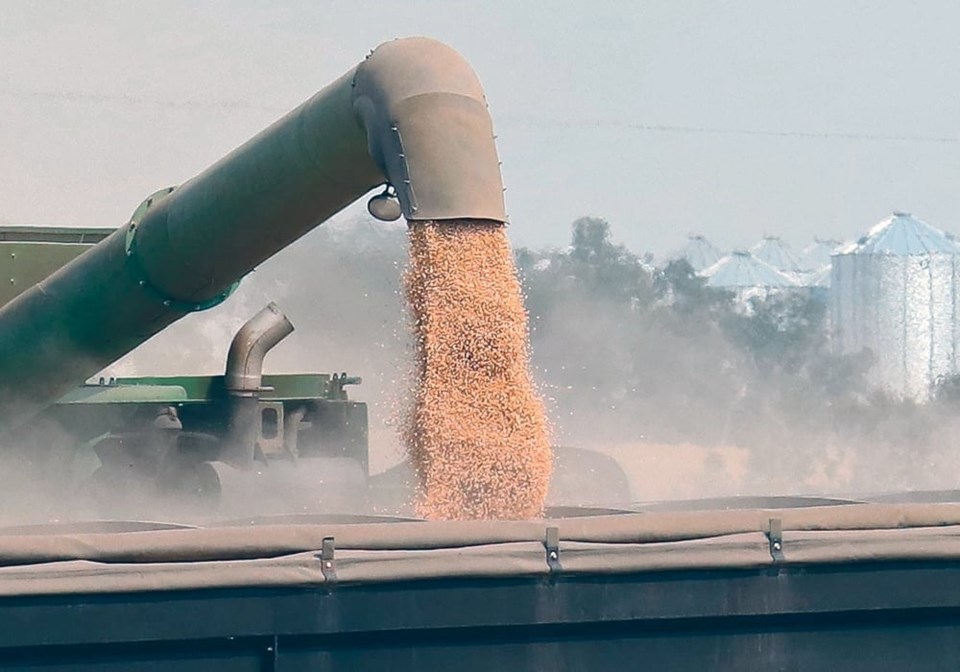SASKATOON — A U.S. antidumping investigation regarding Chinese pea protein could change trade flows for Canadian yellow peas in 2024-25, say traders of the commodity.
In a preliminary determination handed down Feb. 8, the U.S. Department of Commerce hit two Chinese manufacturers with an anti-dumping duty of 280 percent and the remainder with a 122 percent tax.
The final determination is due June 24.
Cao Derong, president of the China Chamber of Commerce of Import & Export of Foodstuffs, Native Produce and Animal Byproducts (CFNA), called the preliminary determination “unfair and unreasonable.”
He said China imported more than two million tonnes of yellow peas in 2023.
Half of that volume is consumed by China’s pea fractionation business, Derong said during the pea market outlook at the Global Pulse Confederation’s Pulses 24 conference.
The country produces 200,000 tonnes of yellow pea protein annually, half of which is shipped to the United States.
If the U.S. Department of Commerce upholds those tariffs in its final determination, it will derail about 500,000 tonnes of yellow pea imports to China annually.
“It’s serious,” said Derong.
Derek Drayson, a Canadian trader with Agrocorp International, said all of Canada’s pea exports to China are currently heading to the fractionation market, so he agreed that it is serious.
If China’s pea protein exports to the U.S. are effectively eliminated by the punitive duties, there will be fewer Canadian peas heading to the Chinese market.
However, he noted that there is considerable unused pea fractionation capacity in Canada and the U.S. that would benefit from the reduced competition from Chinese pea protein.
“We’re just going to change the trade flow and we’re going to be shipping to processing plants in North America as opposed to processing plants in China,” said Drayson.
As a result, it shouldn’t change the supply and demand balance sheet for Canadian peas in 2024-25.
However, there are other factors that could, said Gaurav Jain, an analyst with AgPulse Analytica. One of those is increased competition from Black Sea peas.
He estimates Russia harvested 4.67 million tonnes of peas in 2023-24 compared to Canada’s 2.55 million tonnes.
A lot of those peas will be consumed domestically but “the new king of yellow peas” will likely end up exporting 2.8 million tonnes compared to Canada’s 2.08 million tonnes.
A lot of those peas are heading to feed markets in China now that there is a phytosanitary agreement in place between the two countries.
Ukraine is also coming on strong with an estimated 258,000 tonnes of exports in 2023-24. It too recently signed a phytosanitary agreement with China.
Jain thinks both of those Black Sea countries will plant more peas in 2024 due to strong demand for the product from China and other markets.
Statistics Canada is forecasting 3.12 million acres of Canadian peas, which is well below the trade expectation of 3.6 million acres.
Drayson estimated there were about 600,000 tonnes of old crop Canadian peas remaining at the time of the Feb. 22 panel discussion. However, only half of that was available for export with the remainder being used for seed.
He said Canadian supplies are tight, demand is strong and old crop prices could run “significantly higher” as prices transition to new crop.
Rustam Guliev, a trader with Top Grain, said there is no more than 200,000 to 250,000 tonnes of Russian peas available for export and that ending stocks will be close to 500,000 tonnes.
He estimates Russia has shipped 850,000 tonnes of peas to China so far in 2023-24.
Derong said Canada remains the top supplier of peas to the Chinese market, but Russia is quickly catching up.
“The quality from Canada is much higher, but the price is also much higher,” he said.
Guliev said Russian quality can be every bit as good as Canada’s, but Russia’s pea production area is vast, and the main problem is the lack of uniformity.
“This is what we should work on,” he said.
Ozan Ozturk, a trader with Agrozan Commodities, said Turkey imported about 500,000 tonnes of peas last year, all for processing and re-export.
He said it is difficult for Turkey to ship peas to the Indian subcontinent these days because two major container shipping lines are refusing to use the Suez Canal.
Container freight is US$40 to $50 per tonne higher than it was back in December, and it is now taking 60 to 85 days of transit time to move product to those markets.
Ozturk said the situation is only going to get worse as congestion builds in transshipment ports.
Some bulk vessel owners are also refusing to use the canal, adding $25 to $30 per tonne in bulk carrying charges from the Black Sea and Mediterranean regions to the Indian subcontinent.
He noted that the surge in demand from India has temporarily “washed out” sales to Pakistan and Bangladesh because prices are too high, but that demand still needs to be filled before new crop is harvested.




